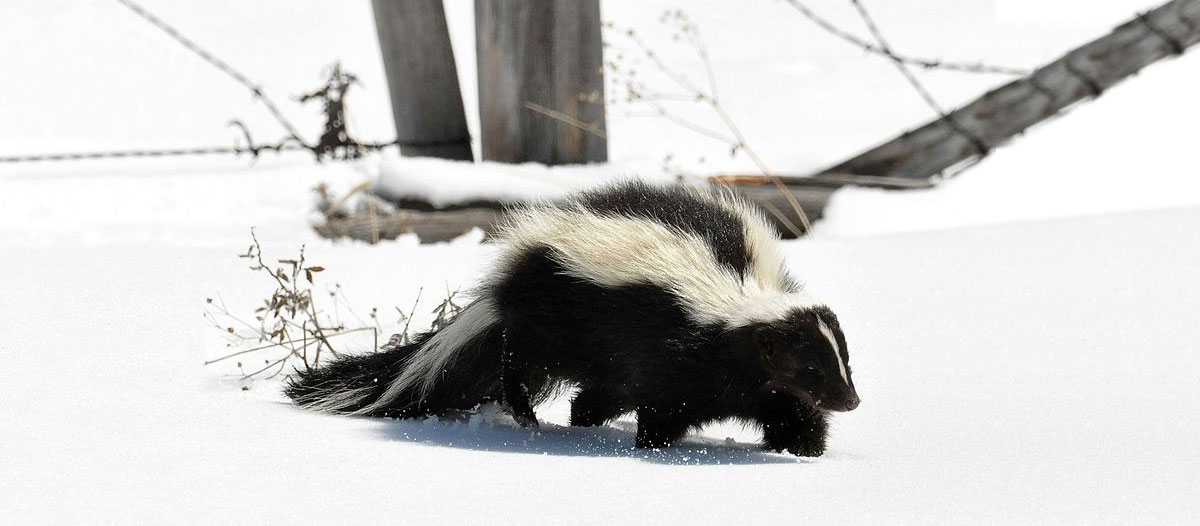
Photo: Dan & Lin Dzurisin, CC Attribution 2.0 generic
Learn more about striped skunks in Illinois in OutdoorIllinois Journal:
Mix 1 quart 3% hydrogen peroxide solution, 1⁄4 cup baking soda, and 1 teaspoon liquid soap. Do not add water. This solution can be used to wash skin, clothes, or pets that have been sprayed by skunks. Due to the peroxide, the solution may discolor cloth or lighten the fur of pets. Do not use the solution on the pet’s face near the eyes.
Skunks eat a variety of insects and other garden pests.
Skunks are one of the most easily identified mammals in Illinois. They are the size of a small house cat, averaging 22 to 26 inches in total length and weighing 3 to 12 pounds. In Illinois, males average 6 pounds and females 4½ pounds. They have black fur; small, pointed faces; and bushy tails. They have 5 toes on each foot, and the front feet have long claws for digging.
The striped skunk’s most distinguished characteristic is the two white stripes extending back from a patch of white fur on the top of the head. On some individuals the stripes do not extend all the way down the back or may be absent completely. Skunks usually have a small white streak extending from just above the nose to the forehead.
Skunk tracks look somewhat similar to cat tracks, but skunks have five toes, and cats have four toes. Another way to distinguish between the two species is the claw marks. Cat claws are retractable and do not show in their tracks. The claw marks of skunks are usually present. They will be longer on the tracks of the front feet than on the longer hind feet.
Skunk droppings look similar to cat droppings but may contain undigested insect parts, berry seeds, fur, or feathers. The ends of the droppings are often blunt.
Skunks are common in Illinois and can be found in every county.
Skunks are nocturnal and are seen most often at dusk and in early morning. They do not hibernate, but they may sleep for extended periods during the winter. While skunks are typically solitary animals, they are sometimes found in communal dens. They are usually docile and prefer to avoid conflict.
Skunks are well known for their method of defense. They have scent glands that produce a musk of butyl mercaptan, a strong, sulfur-smelling odor. When threatened, the skunk will raise its tail and stamp its front feet. If the predator does not back away, the skunk quickly twists its body into a U-shape and sprays the attacker.
Skunks can be carriers of rabies. Possible signs that a skunk is infected with the disease include loss of fear of people, uncoordinated movements, and seizures. If you suspect a skunk has rabies, call the county animal control office to remove the skunk.
Skunks are habitat generalists. They are found along habitat edges near a source of water. Skunks may be found near woodlands, along fence rows, in agricultural areas, and in urban environments such as lawns, cemeteries, and golf courses. They use abandoned woodchuck, muskrat, fox, or badger burrows but often rest above ground during the warmer months. They also will use stumps, buildings, or rock or brush piles as den sites.
Summer home ranges of 83 to 1,860 acres have been reported for skunks in Illinois. Winter home ranges tend to be smaller than summer home ranges since skunks typically stay close to their dens. The size of a skunk’s home range will vary based on the amount of food and shelter available in the area.
Skunks are omnivores (eat both plant and animal material). They prefer to eat insects, particularly grasshoppers, beetles, and crickets. They also eat grubs and other insect larvae as well as bees and wasps. When the opportunity arises, they will take mice, rats, moles, shrews, young ground squirrels and rabbits, nesting birds, nestlings, and bird or snake eggs. Skunks also eat corn, berries, and other vegetation. In an urban environment, they may eat garbage or pet food that has been left outside.
Skunks are polygamous and mate between mid-February and mid-March. Gestation is 62 to 66 days. The female has one litter of four to eight young in May or early June. The newborn young have developed fur by their second week, and their eyes open around 3½ weeks of age.
Young begin to venture out on hunting expeditions with the female at seven weeks and are fully weaned by the time they are two months old. The female cares for the young alone. In the fall, young skunks disperse to find their own territories.
Skunks may burrow under buildings, raid garbage, and dig holes in lawns while hunting for grubs especially in the late summer/early fall, and they sometimes raid poultry pens or bee hives.
Seal off all openings along the foundation to keep skunks from burrowing under buildings. Be sure that the skunk is not still inside when the opening is sealed. To be sure the animal is out, loosely stuff newspaper into the openings during the morning or afternoon when the skunk may be asleep inside. If the newspaper has not been moved after a couple of days, it is safe to proceed with repairs and to close off the access points. Openings should not be sealed if young are present. Openings can be sealed with wire mesh, sheet metal, or concrete.
Skunks also sometimes get trapped in window wells. Use a window well cover to keep skunks from falling into the window well. If a skunk falls in a window well, staple a towel to a board (to help the skunk keep its footing), and place the board into the window well at a slight angle so that the skunk can climb out.
Fences can be used to keep skunks out of your property or to protect small areas such as gardens or chicken coops.
There are currently no registered repellents for skunks in Illinois.
Frightening devices such as strobe lights or radios placed at the burrow are typically not very effective, but they do work in some cases.
If habitat modifications and exclusion methods fail to remedy the problem, it may be necessary to remove the skunk. If you wish to have someone trap and remove the skunk you can hire a nuisance wildlife control operator.
If you wish to handle the situation yourself, you will need to request a nuisance animal removal permit from an Illinois Department of Natural Resources district wildlife biologist before removing the skunk. The biologist can provide information on options for resolving problems, including issuance of a nuisance animal removal permit.
The IDNR Furbearers page provides more information about hunting and trapping Furbearers. The Illinois Trapper Education Manual provides guidance on the best management practices for trapping. Trap size recommendations for striped skunks are found on page 90; see Trapper Education Manual.
Current hunting and trapping seasons can be found in the Illinois Digest of Hunting and Trapping Regulations or in the Legal Status section below.
Recreational fur-trapping (and hunting when and where allowed) is the preferred method to deal with nuisance furbearer issues. Trapping can help control the local population of animals and, in some cases, reduce the number of nuisance complaints and the damage that some species can cause. The Illinois Department of Natural Resources offers a lengthy trapping season (3 months, in some cases 4.5 months). Legal trapping can occur 100 yards from an occupied dwelling without permission of the occupants, closer with permission as long as there are no municipal ordinances that prohibit trapping.
In Illinois, skunks are protected as Furbearers. In urban areas, skunks may be removed if a nuisance animal removal permit is issued by an IDNR district wildlife biologist. In rural areas, a hunting or trapping license is needed to harvest a skunk. Skunks may be hunted year-round with no limit to the number that can be taken by licensed hunters. Skunks may be trapped from mid-November through mid-February. There is no limit to the number of skunks an individual with a trapping license may take during the season. See the Illinois Digest of Hunting and Trapping Regulations for hunting and trapping season dates and current regulations.
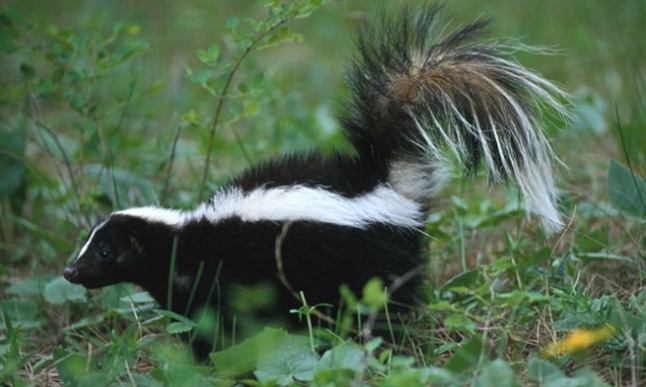
Photo: Erwin C. Nielsen, Painet Inc., IDNR image library
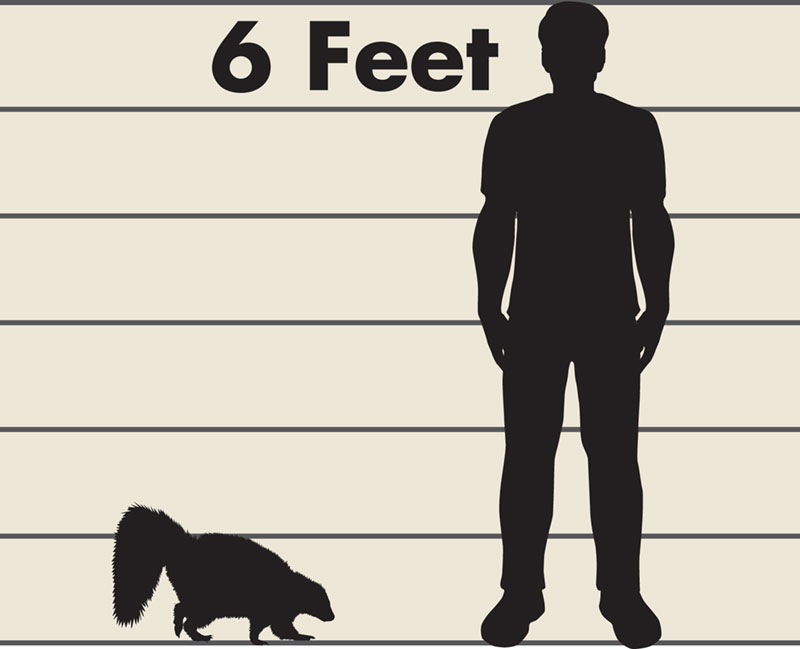
Illustrator: Lynn Smith
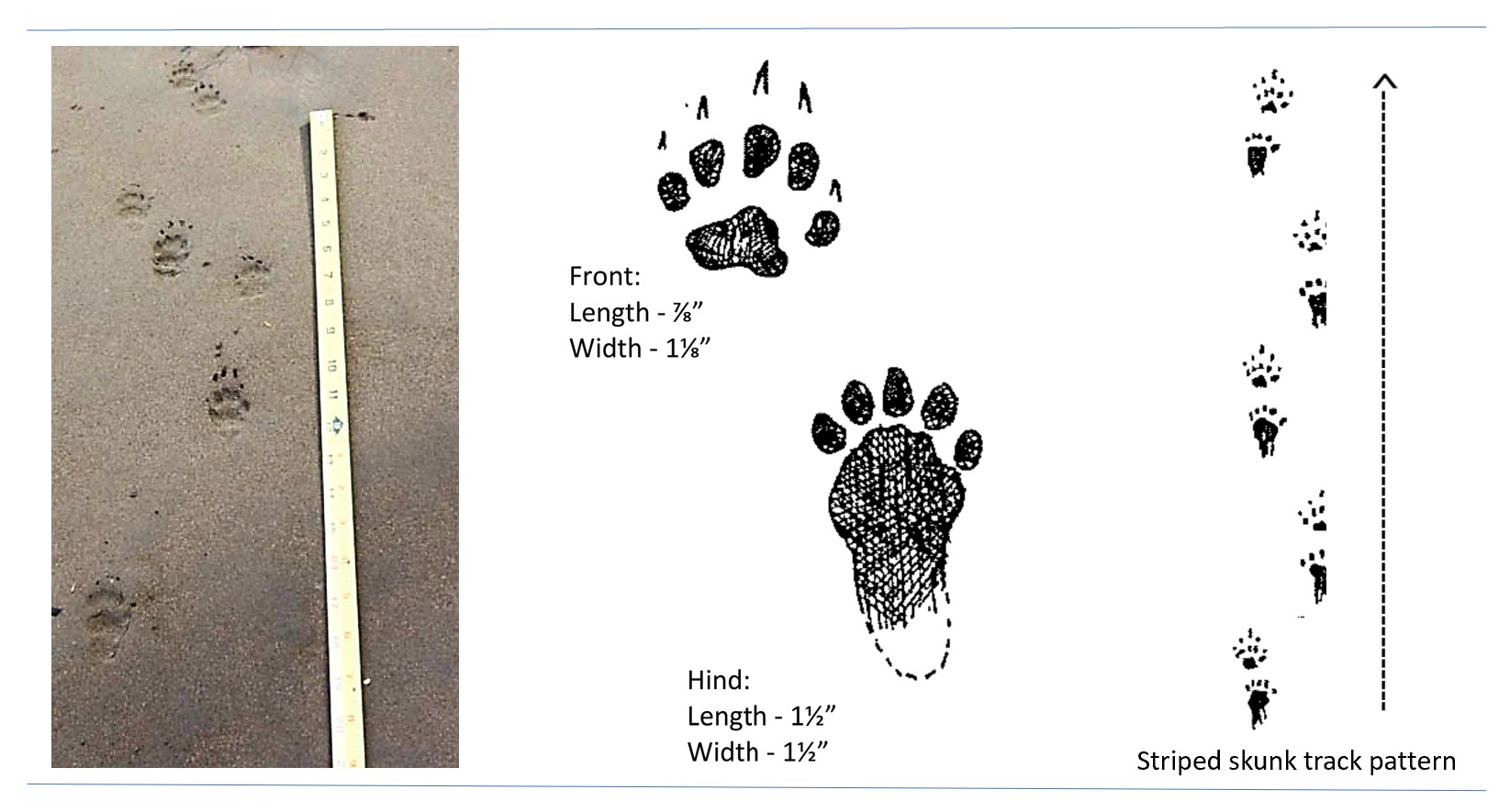
Photo: Terry Kem Illustrations: Dan Goodman
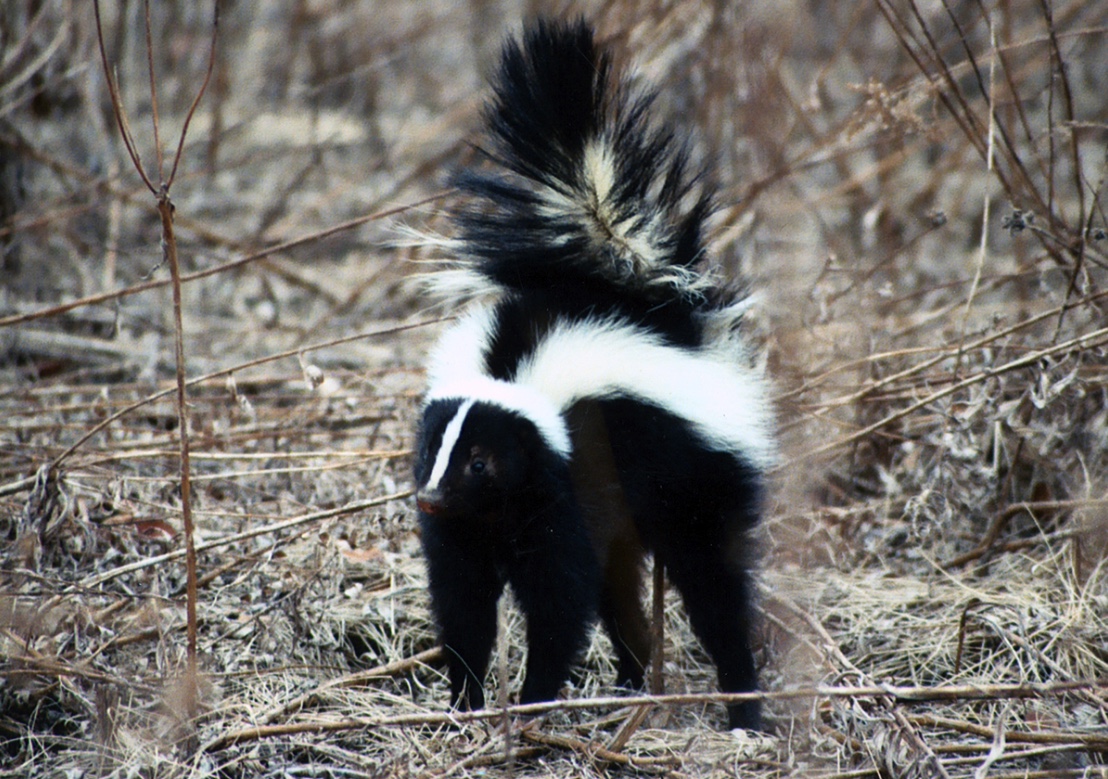
Photo: DuPage County Forest Preserve District
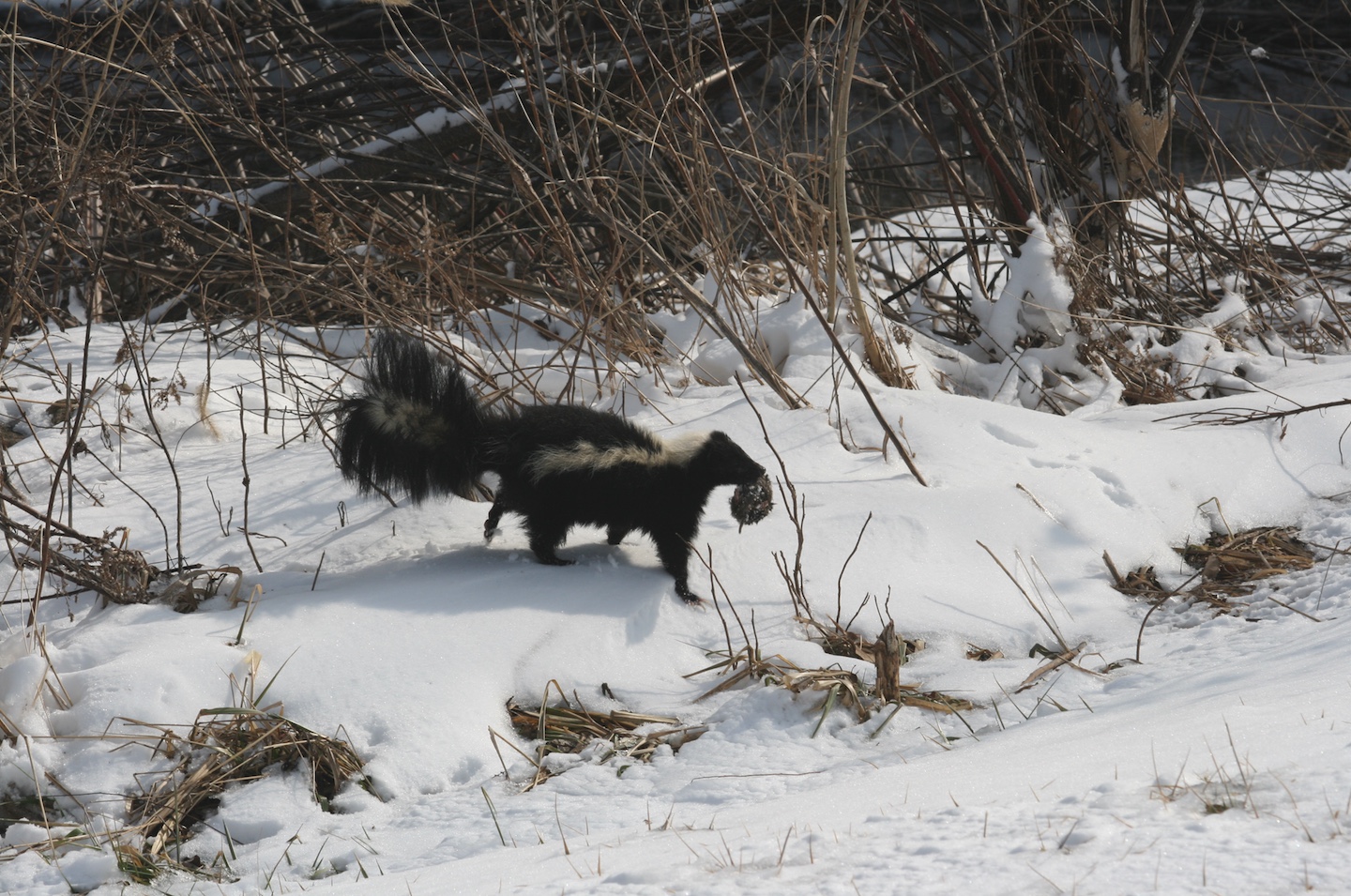
Photo: Stan McTaggart, IDNR
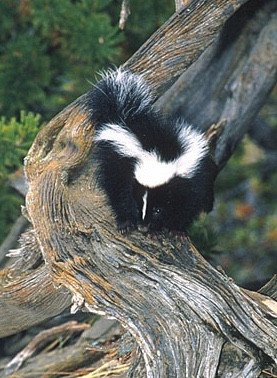
Photo: Robert Barber, Painet Inc., IDNR image library
The Wildlife Illinois website was authorized by the Illinois Department of Natural Resources (IDNR) in partial fulfillment of project W-147-T. The website was developed by the National Great Rivers Research and Education Center, 2wav, and the IDNR in partnership with the United States Department of Agriculture Animal and Plant Health Inspection Service Wildlife Services and University of Illinois Extension to provide research-based information about how to coexist with Illinois wildlife.